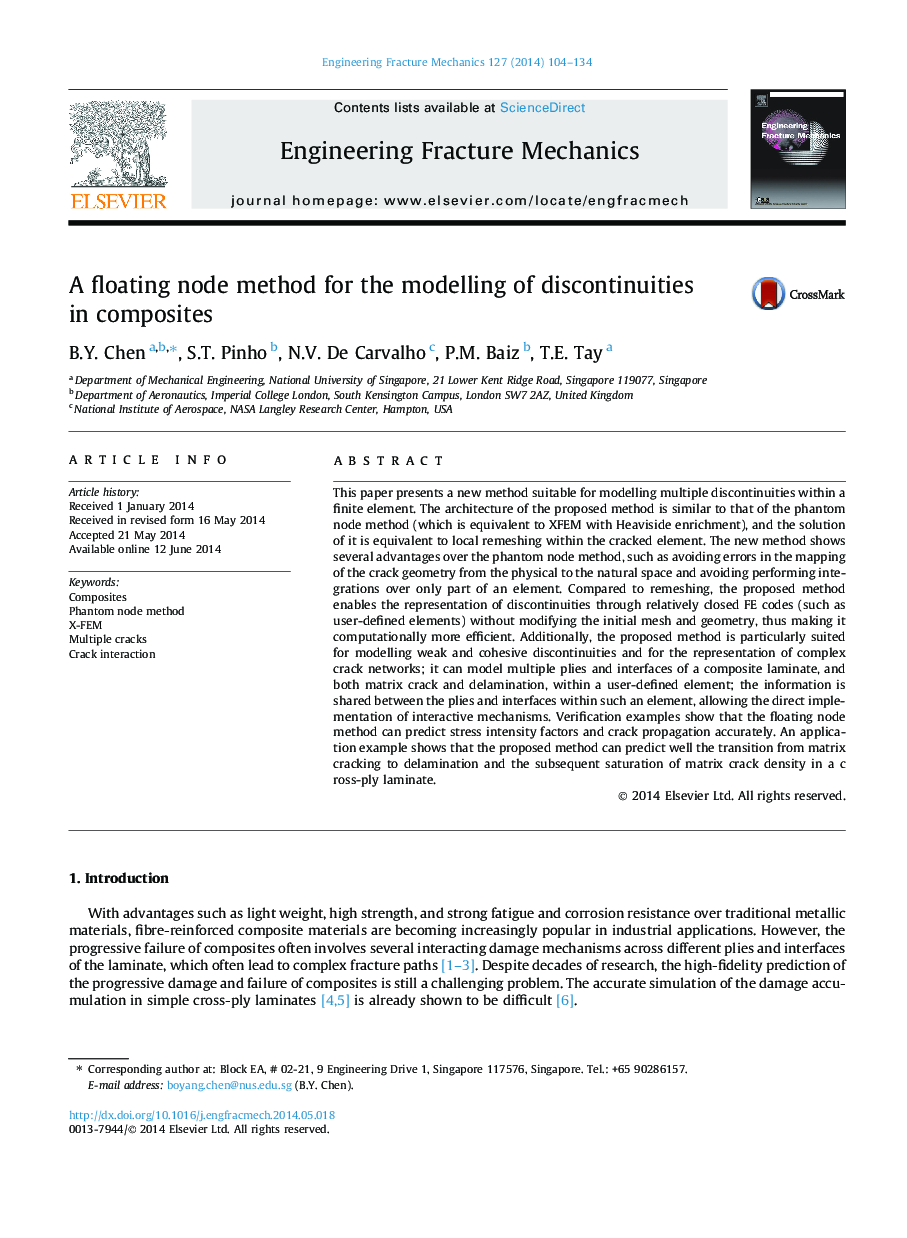| کد مقاله | کد نشریه | سال انتشار | مقاله انگلیسی | نسخه تمام متن |
|---|---|---|---|---|
| 770682 | 1463101 | 2014 | 31 صفحه PDF | دانلود رایگان |
• We propose a new method for the modelling of discontinuities in a finite element.
• It can represent multiple intersecting discontinuities in one element.
• It does not require partial domain integration for partitioned elements.
• It can model both matrix cracking and delamination within the same element.
• It can predict matrix cracking/delamination interactions accurately.
This paper presents a new method suitable for modelling multiple discontinuities within a finite element. The architecture of the proposed method is similar to that of the phantom node method (which is equivalent to XFEM with Heaviside enrichment), and the solution of it is equivalent to local remeshing within the cracked element. The new method shows several advantages over the phantom node method, such as avoiding errors in the mapping of the crack geometry from the physical to the natural space and avoiding performing integrations over only part of an element. Compared to remeshing, the proposed method enables the representation of discontinuities through relatively closed FE codes (such as user-defined elements) without modifying the initial mesh and geometry, thus making it computationally more efficient. Additionally, the proposed method is particularly suited for modelling weak and cohesive discontinuities and for the representation of complex crack networks; it can model multiple plies and interfaces of a composite laminate, and both matrix crack and delamination, within a user-defined element; the information is shared between the plies and interfaces within such an element, allowing the direct implementation of interactive mechanisms. Verification examples show that the floating node method can predict stress intensity factors and crack propagation accurately. An application example shows that the proposed method can predict well the transition from matrix cracking to delamination and the subsequent saturation of matrix crack density in a cross-ply laminate.
Journal: Engineering Fracture Mechanics - Volume 127, September 2014, Pages 104–134
